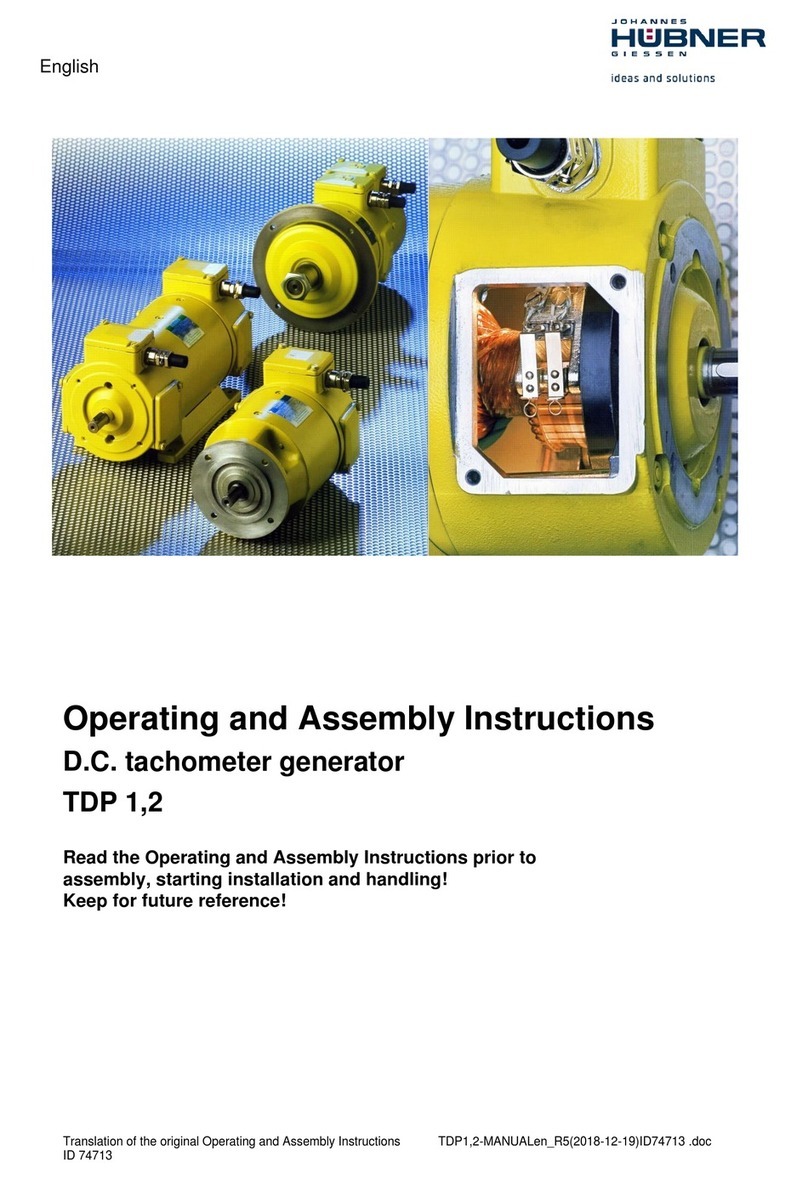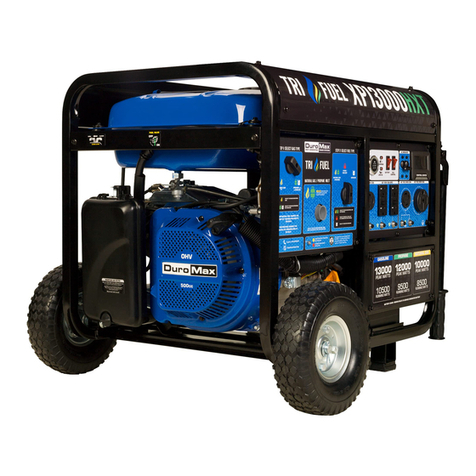AeroDiode TOMBAK User manual

AERODIODE - Institut d’optique d’Aquitaine - Rue François Mitterrand
33400 Talence - France - Tél.: +33 (0)6 27 69 41 62
www.aerodiode.com
Operating manual
TOMBAK
Pulse Delay Generator
Digital Delay Generator
Pulse Picker
Voltage Converter
Arbitrary Waveform Generator

Page 2/79 – v2.9
Global Introduction
The Pulse-Delay Generator is a very versatile module, it provides many settings to realize a
large set of functions, from the simplest to the very advanced ones:
It can be used as:
•A basic Pulse Generator : see “Using TOMBAK as a standalone generator” section 5.1 (p28).
•A Digital Delay Generator : see “Using TOMBAK as a Digital Delay Generator” section 5.2
(p33).
•A burst generator : see “Using TOMBAK as a burst generator” section 5.3 (p39 ).
•A signal gating module : see “Using the gate feature of TOMBAK” section 5.4 (p44)
•A Synchronization module : see Using TOMBAK as a signal synchronization module section
5.5 (p49)
•A voltage level convertor : see “Using TOMBAK as a Voltage Level Converter” section 5.6
(p55)
•A frequency divider : see “Using TOMBAK as a frequency divider” section 5.7 (p60)
•A Pulse-picker : see “Using TOMBAK as a Pulse-Picker” – section 5.8 (p65)
•An AWG (user manual improvement coming soon)

Page 3/79 – v2.9
Contents
1. General information ............................................................................................................... 8
1.1 Definitions....................................................................................................................... 8
1.2 General warning.............................................................................................................. 8
2. Safety Instructions .................................................................................................................. 9
2.1 Wiring.............................................................................................................................. 9
2.2 Operating Environment .................................................................................................. 9
2.3 Contact............................................................................................................................ 9
3. Package Content ................................................................................................................... 10
4. Product overview.................................................................................................................. 10
4.1. Physical properties........................................................................................................ 10
4.2. Front-Panel overview.................................................................................................... 11
Power and Communications Connectors ............................................................. 11
SMA Output and Input Connectors ...................................................................... 11
KK Connectors....................................................................................................... 12
4.3. System Setup................................................................................................................. 12
Power .................................................................................................................... 12
USB........................................................................................................................ 12
Tools Installation (Windows) ................................................................................ 13
4.4. Hardware Setup ............................................................................................................ 16
1st PCB version...................................................................................................... 16
2nd PCB version...................................................................................................... 18
4.5. Global Architecture....................................................................................................... 20
4.6. Multi-channel module – Stacked TOMBAK .................................................................. 20
4.7. Front-Panel User Interface............................................................................................ 23
Overview ............................................................................................................... 23
Working Mode ...................................................................................................... 23
Input Pulse ............................................................................................................ 24
Output Pulse ......................................................................................................... 25
Synchro Input........................................................................................................ 25

Page 4/79 – v2.9
Synchro Output..................................................................................................... 27
5. Configuration Example.......................................................................................................... 28
5.1. Using TOMBAK as a standalone generator................................................................... 28
Presentation.......................................................................................................... 28
Timing diagram ..................................................................................................... 28
Synoptic................................................................................................................. 28
Cabling................................................................................................................... 29
Software configuration ......................................................................................... 29
Main features........................................................................................................ 32
5.2. Using TOMBAK as a Digital Delay Generator................................................................ 33
Presentation.......................................................................................................... 33
Timing diagram ..................................................................................................... 34
Synoptic................................................................................................................. 34
Cabling................................................................................................................... 34
Software configuration ......................................................................................... 35
Main features........................................................................................................ 38
5.3. Using TOMBAK as a burst generator ............................................................................ 39
Presentation.......................................................................................................... 39
Timing diagram ..................................................................................................... 39
Synoptic................................................................................................................. 39
Cabling................................................................................................................... 40
Software configuration ......................................................................................... 40
Main features........................................................................................................ 43
5.4. Using the gate feature of TOMBAK............................................................................... 44
Presentation.......................................................................................................... 44
Timing diagram ..................................................................................................... 44
Synoptic................................................................................................................. 44
Cabling................................................................................................................... 45
Software configuration ......................................................................................... 45
Main features........................................................................................................ 48
5.5. Using TOMBAK as a signal synchronization module................................................... 49

Page 5/79 – v2.9
Presentation.......................................................................................................... 49
Timing diagram ..................................................................................................... 49
Synoptic................................................................................................................. 49
Cabling................................................................................................................... 50
Software configuration ......................................................................................... 51
Main features........................................................................................................ 54
5.6. Using TOMBAK as a Voltage Level Converter ............................................................... 55
Presentation.......................................................................................................... 55
Timing diagram ..................................................................................................... 55
Synoptic................................................................................................................. 55
Cabling................................................................................................................... 56
Software configuration ......................................................................................... 56
Main features........................................................................................................ 59
5.7. Using TOMBAK as a frequency divider ......................................................................... 60
Presentation.......................................................................................................... 60
Timing diagram ..................................................................................................... 60
Synoptic................................................................................................................. 60
Cabling................................................................................................................... 61
Software configuration ......................................................................................... 61
Main features........................................................................................................ 64
5.8. Using TOMBAK as a PULSE-PICKER ............................................................................... 65
Introduction / Overview ....................................................................................... 65
Timing diagrams.................................................................................................... 65
5.9. Using TOMBAK as an AWG (Arbitrary Waveform Generator) or a “Burst Shaper” ..... 66
Introduction .......................................................................................................... 66
Timing diagrams.................................................................................................... 67
Synoptic................................................................................................................. 67
Cabling................................................................................................................... 68
Software configuration ......................................................................................... 69
5.10. Using Tombak as as a long delay/pulse-width generator with low jitter..................... 72
Introduction .......................................................................................................... 72

Page 6/79 – v2.9
Timing diagrams.................................................................................................... 72
Software configuration ......................................................................................... 73
5.11. How to delete the pulse out delay between stacked Tombak ? .................................. 76
Introduction .......................................................................................................... 76
Cabling................................................................................................................... 77
Software configuration ......................................................................................... 77
6. Technical Specifications ........................................................................................................ 79
6.1. General Data ................................................................................................................. 79
6.2. Detailed data................................................................................................................. 79

Page 7/79 – v2.9
Revision Sheet
Release No.
Date
Revision Description
v1.0
27/04/17
First version
v1.1
07/12/2017
Add Hardware setup and divider example configuration
v1.2
24/01/2018
Updated the list of instructions (§ Erreur ! Source du renvoi
introuvable.)
v1.3
26/02/2018
Add Multiple channel section
v1.4
14/10/2019
Corrected several documentation errors in Remote
Communication setpoints
V1.5
26/10/2019
Several modifications for 3 product versions (
TOMBAK/DDG/Pulse-picker) – correction of bad pictures for
Voltage converter etc.
v1.6
04/11/2019
Add Configuration example for AWG / Burst shaper
V2.0
23/03/2020
Aerodiode transfer
V2.1
20/04/2020
Added Safety instruction + Layout overhaul
V2.2
23/04/2020
Added Specifications Table
V2.3
30/04/2020
Added multiple notes regarding CE regulations
V2.4
07/09/2020
Added description of PCB version for hardware configuration
V2.5
13/01/2021
Added description for Sync Ext hardware configuration
V2.6
10/08/2021
Remove Remote Communication
V2.7
29/10/2021
Remove mention of mistake on PCB label : obsolete
V2.8
10/06/2022
Add 10 MHz Clock Int features
V2.9
17/06/2022
Add Resynchronization Pulse Out feature
Disclaimer
Information in this document is subject to change without notice.
Copyright © Aerodiode
Bât. IOA, rue François Mitterrand - 33400 Talence – France
www.aerodiode.com

Page 8/79 – v2.9
1. General information
Please read this manual carefully, it describes the hazard the user might be exposed to while
using the product. It also explains in details how to use the product in the safest and more
efficient way possible.
The safety of any system incorporating the product is the responsibility of the assembler of the
system.
Any actions taken by the user that is not clearly described in this user manual might present a
risk and is the sole responsibility of said user.
This product is to be used in laboratory or industrial tasks, and only by trained personnel.
1.1 Definitions
Caution : A caution is advised when dealing with hazardous situations, tasks or objects, to
prevent harm or death and avoid material damage or failure.
Warning : A warning is given for potentially dangerous situation for people which cause them
harm or lead to death
Note : A note is a complementary piece of advice that must be acknowledged by the user.
1.2 General warning
WARNING
Do not try to open or remove the cover of the TOMBAK module
Note
Only use the genuine power supply, and the supplied USB cable
WARNING
Avoid all chocs and strains when handling the TOMBAK
WARNING
Any software settings or hardware tinkering that is not described in this user manual or in the
usage recommendation may put the user or its environment at risk.

Page 9/79 – v2.9
WARNING
the maintenance and servicing of the TOMBAK should not be executed by the end user : only
AERODIODE is able to maintain the TOMBAK.
2. Safety Instructions
2.1 Wiring
Caution
-Please first connect the input pins to the board and then plug the DC Power Supply.
-Use caution when connecting the Power Supply.
-Protect the power cord from being walked on or pinched particularly at plugs,
convenience receptacles, and the point where they exit from the TOMBAK module.
-Only use the supplied power and USB cable
2.2 Operating Environment
Caution
-Do not install near any heat sources such as radiators, heat registers, stoves, or other
equipment (including amplifiers) that produce heat.
-To reduce the risk of fire or electric shock, do not expose the TOMBAK to rain or
moisture.
2.3 Contact
If you have any question about the TOMBAK module, please contact AERODIODE

Page 10/79 – v2.9
3. Package Content
The Pulse Delay Generator package comes with:
•1 TOMBAK board
•1 EU DC Power Supply (+5V / 2A)(CE)
•1 power adaptor (US or UK depending on your location)
•1 USB-Jack FTDI cable
•1 Jack to Jack Cable (only if you ordered more than one product)
•1 CD-ROM or USB Key with “Aerodiode Control Software Suite”
•1 User Manual
Figure 1 Package Content
Note
No SMA cable are supplied.
Caution
This product has been tested and found to comply with the limits according to IEC 61326-1 with
the use of connection cables less than or equal to 3 meters. We also recommend using fully-
shielded, high-quality cables such as ULC-3FT-SMSM+.
4. Product overview
4.1. Physical properties
Length
105
mm
Width
100
mm
Height
30
mm
Weight
210
g

Page 11/79 – v2.9
4.2. Front-Panel overview
Power and Communications Connectors
①- Power connector (5V / 0.7A). Two variants exist, either jack Power connector or Terminal
Block. Only the Terminal bloc variant is displayed in this user manual.
② - Input Communication Connector
③ - Output Communication Connector
SMA Output and Input Connectors
④ - Analogic Output Signal (Shaper)

Page 12/79 – v2.9
⑤- Digital Pulse Output Signal (Pulse Out)
⑥ - Synchronization Output Signal 2 (Sync Out 2)
⑦- Synchronization Output Signal 1 (Sync Out 1)
⑧ - External Synchronization Input Signal (Sync Ext In)
⑨ - Digital Pulse Input Signal (Pulse In)
⑩ - External Gate Signal Input (Gate Ext)
KK Connectors
⑪ - Shape Selection Connector
⑫ - External Synchronization Connector
⑬ - Analogic Pulse Input Connector
⑭ - Spare Connectors (Factory use only)
4.3. System Setup
Power
To power TOMBAK module, please use the DC Power adapter provided.
First plug the cables into the power connector (①) of the module.
•Terminal bloc : Red cable in ‘+’ and black cable in ‘-’ (polarity is indicated on the product).
•Jack : simply insert the tip of the connector
You can then plug the DC Power Adapter to a plug socket.
USB
To communicate with TOMBAK module, please use included USB → Jack cable provided.
First connect the jack part into Input Communication Connector (②) of the module.

Page 13/79 – v2.9
Please install software and pilots before plugging USB cable to computer. See section below
Tools Installation (Windows)
TOMBAK boards works along “Aerodiode Control Software”: this software is unique and
compatible with all Aerodiode electronic modules and boards.
4.3.3.1. Software installation
Insert CD-ROM or USB Key provided with the module. Then open an Explorer windows and
navigate into “Computer” part. You will either see a CR-ROM or USB Key with “Aerodiode” title,
open it.
Double click on ControlSoftware_x_x_xx.exe file name.
The following window will show:
Click on Next;
In the following windows, choose a specific installation path or leave default. Then, go to the next
section

Page 14/79 – v2.9
The following window lets you choose the program’s shortcut name in the Start Menu folder.
Feel free to change it or leave it by default.
The next part lets you choose if a desktop icon needs to be created. If so, please check the box.
Then go to next section.

Page 16/79 – v2.9
4.3.3.2. Driver installation
The driver installation runs through 2 parts:
•Microsoft Runtime installation
•USB Driver installation
No specific indication here, just click on “Next” and “Install” dialogs and wait until installations
are finished.
4.4. Hardware Setup
Note
This chapter is for information only. It describes how to change the voltage output (digital and
anolog) of the product. You must ask AERODIODE first in order to have the required
authorization to change the setup.
TOMBAK module provides TOMBAK hardware setup to adjust output voltage level by moving
jumpers on electronic board.
1st PCB version

Page 17/79 – v2.9
Jumper
Pin number 1 is indicated on
electronic board by the symbol
« » or by the indicator « 1 ».
4.4.1.1. “Pulse Out” voltage output level
Voltage level can be adjusted according to the following configuration:
-1V : Jumper J901 in position 2-3
-3,3V : Jumper J901 in position 1-2 and J900 in position 1-2
-TTL : Jumper J901 in position 1-2 and J900 in position 2-3
4.4.1.2. “Shape Out” voltage output level
Voltage level can be adjusted according to the following configuration:
-1V : Jumper J800 in position 2-3 and J801 in position 2-3
-5V : Jumper J800 in position 1-2 and J801 in position 1-2
4.4.1.3. “Sync Ext” voltage input level
Input maximum voltage level can be adjusted according to the following configuration:
-3.3V : Jumper J301 in position 1-2 (mistake on the PCB label)
-5V : Jumper J301 in position 2-3 (mistake on the PCB label)
The “Sync Ext” signal can come from the SMA or a Molex KK connector for OEM:
-SMA input : Jumper J300 in position 1-2 (mistake on the PCB label for old PCB
version < 3.1 )
-Molex KK input : Jumper J300 in position 2-3 (mistake on the PCB label for old PCB
version < 3.1 )

Page 18/79 – v2.9
Jumper
Pin number 1 is indicated on
electronic board by the symbol
« » or by the indicator « 1 ».
2nd PCB version
4.4.2.1. “Pulse Out” voltage output level
Voltage level can be adjusted according to the following configuration:
-1V : Jumper J900 in position bottom-center
-3,3V : Jumper J900 in position top-center
-5V : Jumper J900 in position right-center
4.4.2.2. “Shape Out” voltage output level
Voltage level can be adjusted according to the following configuration:
-1V : Jumper J800 in position 2-3 and J801 in position 2-3
-5V : Jumper J800 in position 1-2 and J801 in position 1-2
4.4.2.3. “Sync Ext” voltage input level
Input maximum voltage level can be adjusted according to the following configuration:
-3.3V : Jumper J301 in position 1-2
-5V : Jumper J301 in position 2-3
The “Sync Ext” signal can come from the SMA or a Molex KK connector for OEM:
-SMA input : Jumper J300 in position 1-2
-Molex KK input : Jumper J300 in position 2-3

Page 19/79 – v2.9

Page 20/79 – v2.9
4.5. Global Architecture
4.6. Multi-channel module – Stacked TOMBAK
TOMBAK can be delivered in multi-channel version with multiple board stacked in a compact
module.
This option allows the user to access multiple output signal while sharing the same power source,
the same communication bus and TOMBAK internal signals between stacked boards. For
Table of contents
Popular Portable Generator manuals by other brands

Champion
Champion 201042 quick start guide
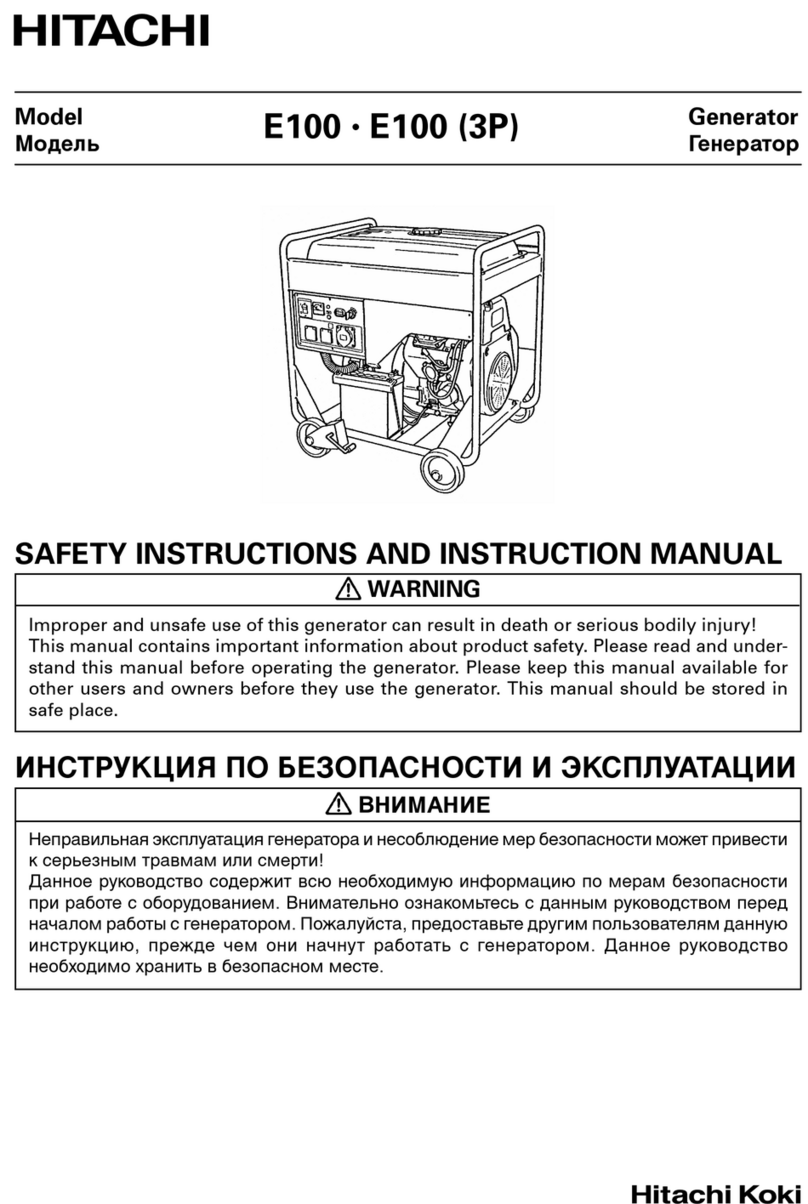
Hitachi
Hitachi E100 Safety instructions and instruction manual
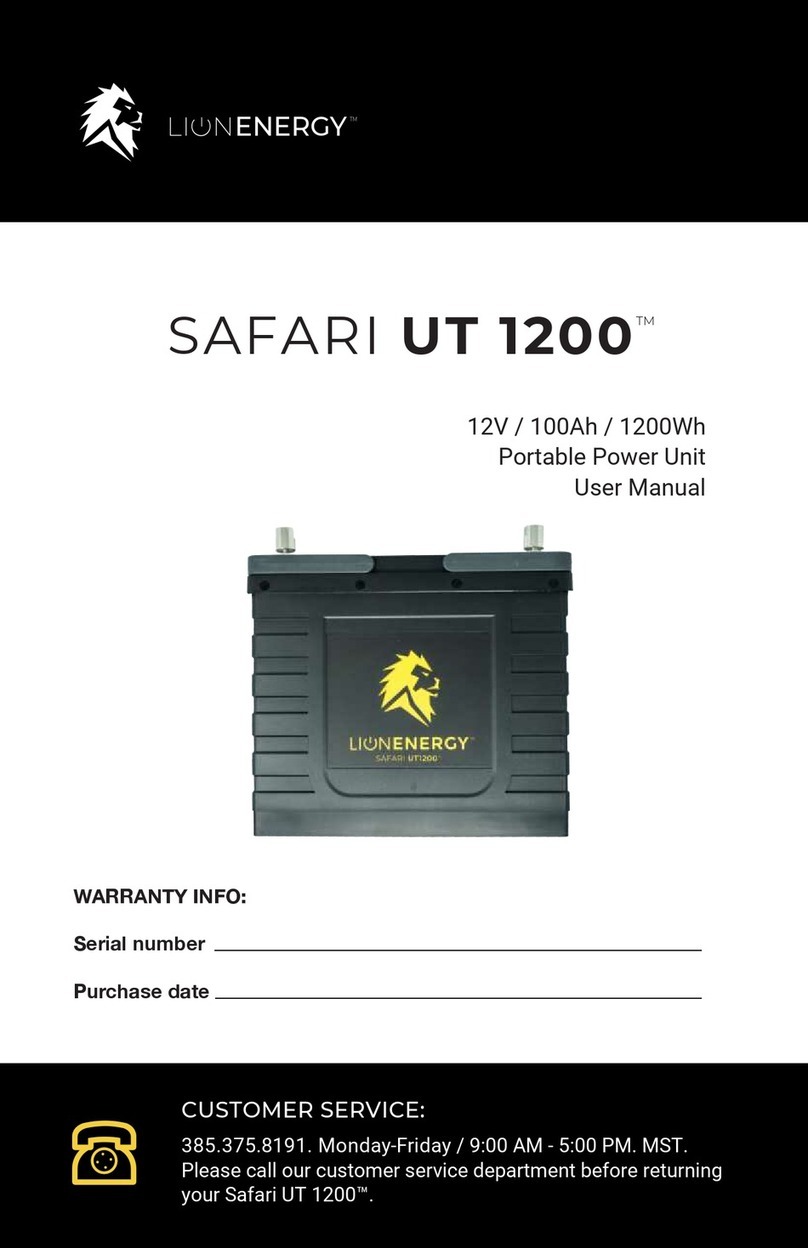
Lion Energy
Lion Energy SAFARI UT 1200 user manual

Makita
Makita G2800N Instructions for use
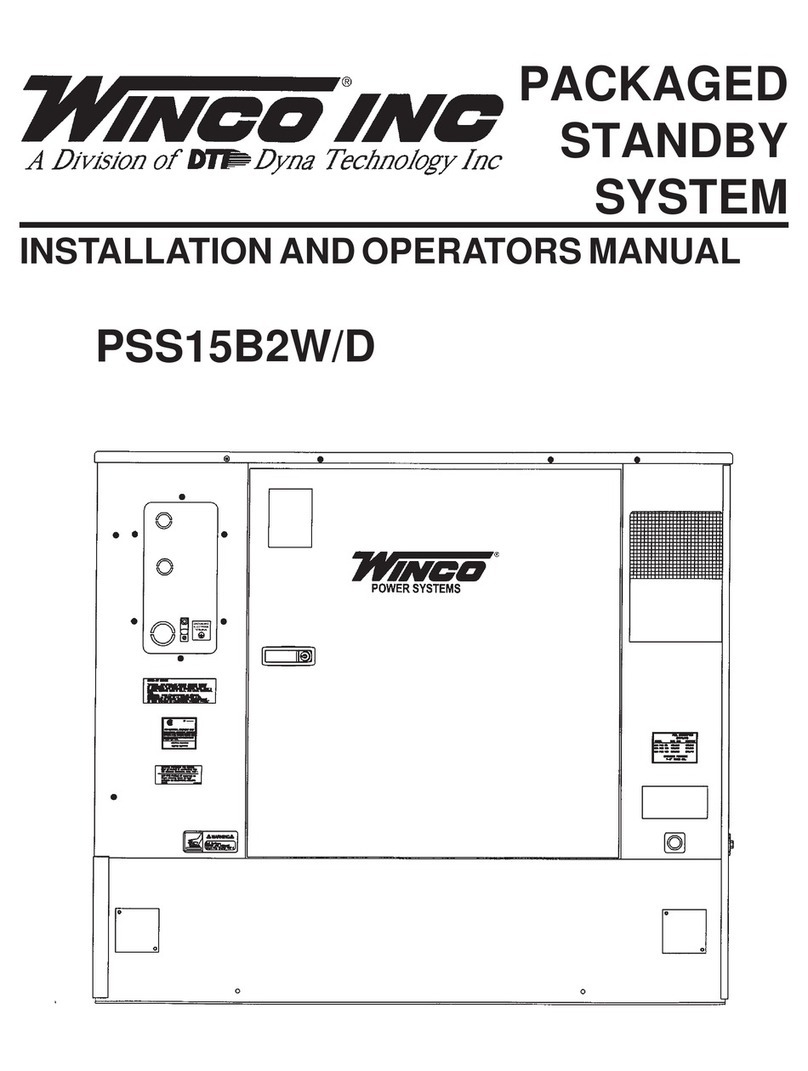
Winco
Winco PSS15B2W/D Installation and operator's manual
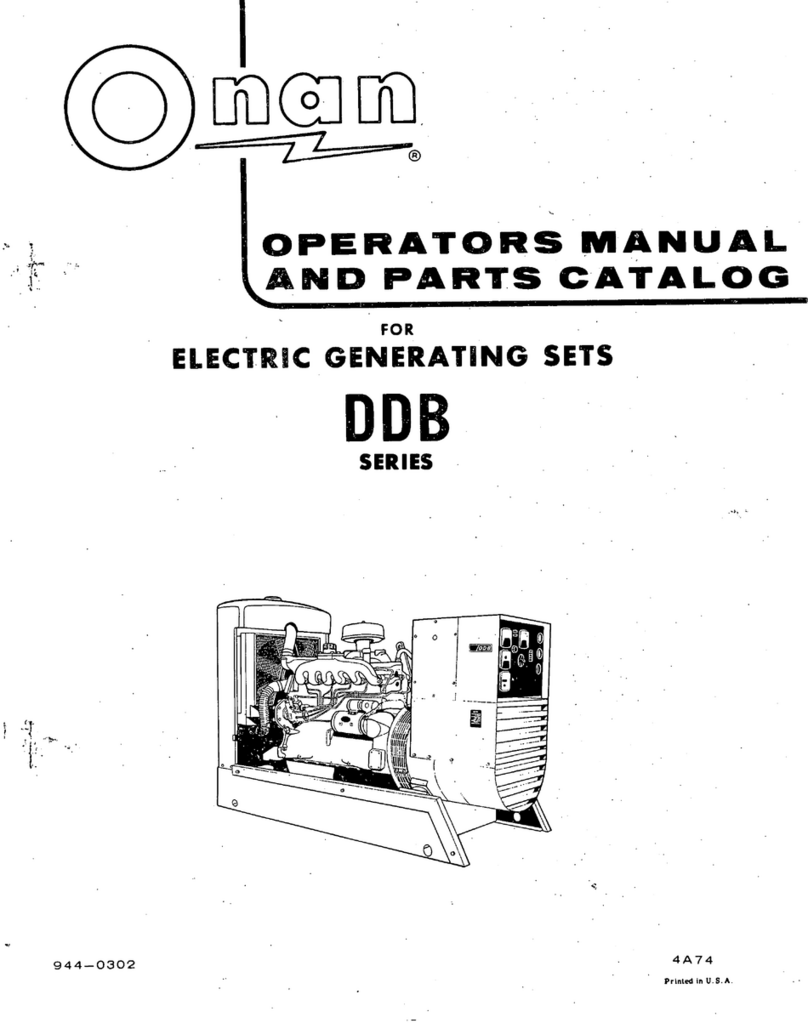
Onan
Onan 50.0DDB-15R Series Operator's manual and parts catalog
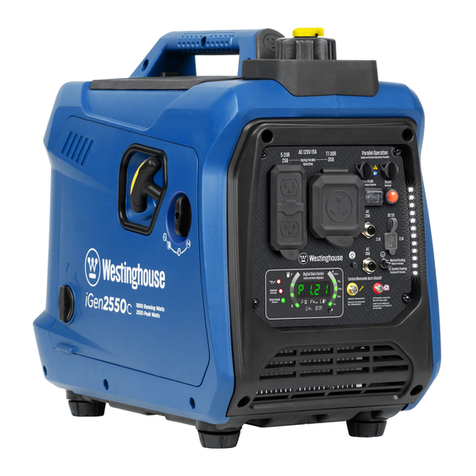
Westinghouse
Westinghouse iGen2550c quick start guide
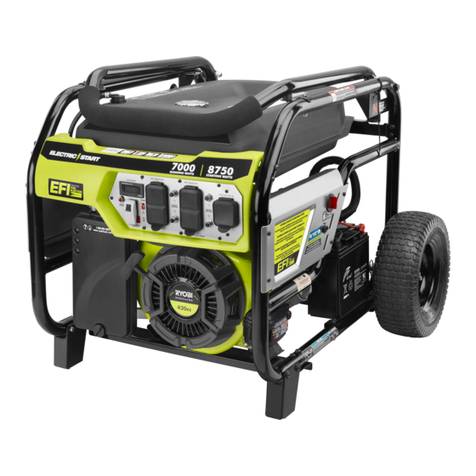
Ryobi
Ryobi RY907022FI Operator's manual
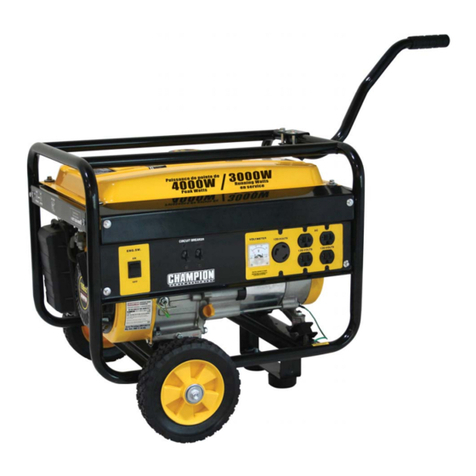
Champion Power Equipment
Champion Power Equipment CSA40037 Owner's Manual and Operating Instructions
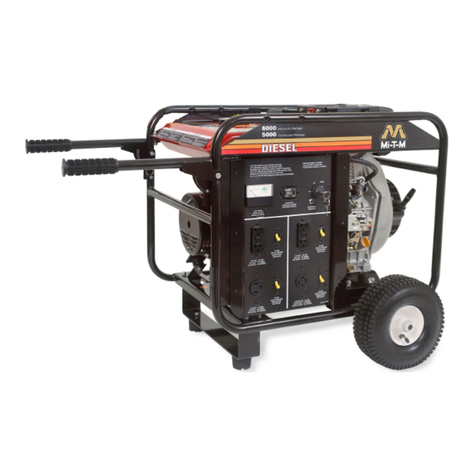
Mi-T-M
Mi-T-M GEN-6000-0MYE Operator's manual
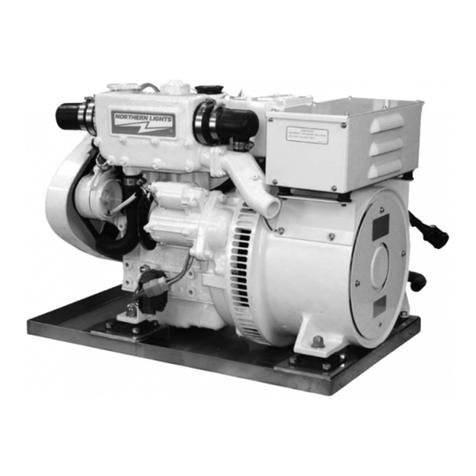
Northern Lights
Northern Lights M673L2 Operator's manual
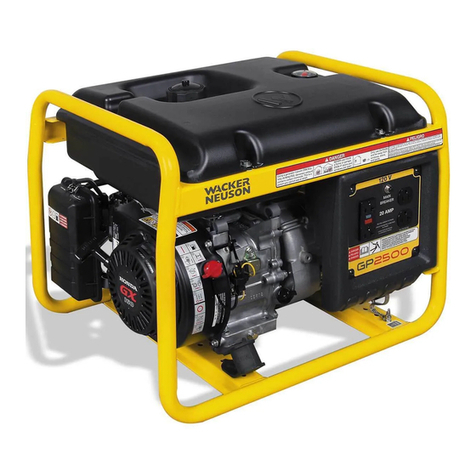
Wacker Neuson
Wacker Neuson GP 2500A user manual


